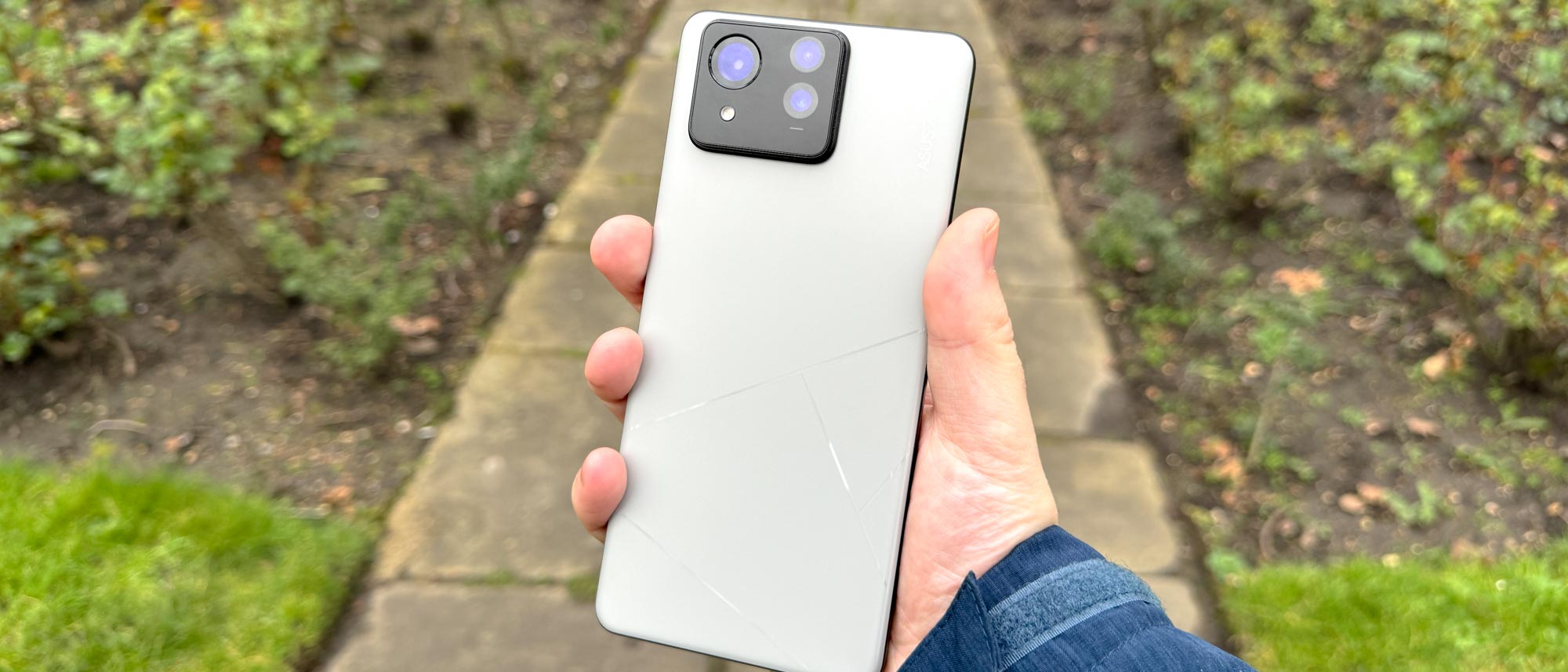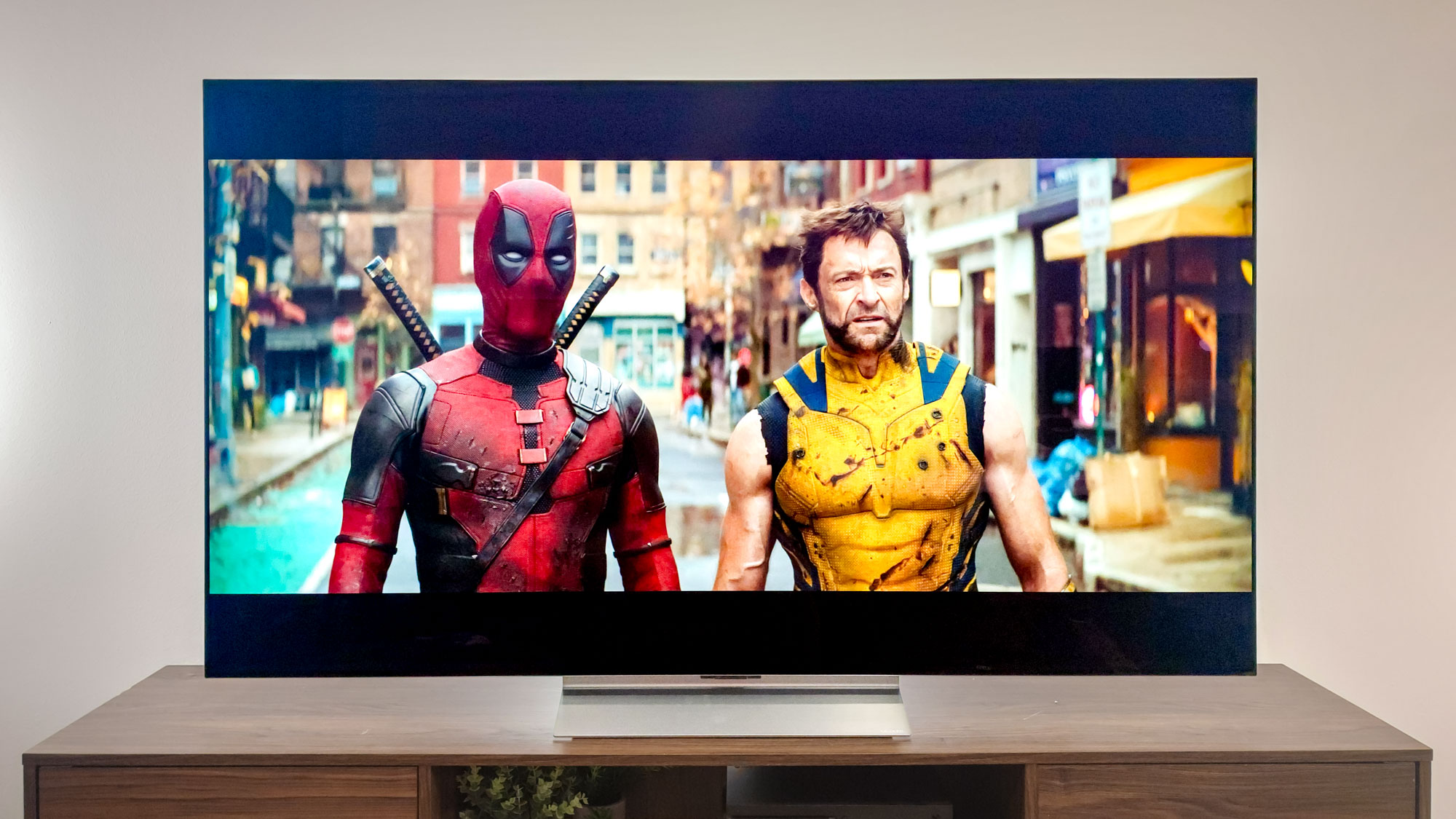Tom's Guide Verdict
Combining the Asus ROG Phone 8's body with the Zenfone 10's sensibilities has resulted in a phone that the average flagship Android buyer will love for how long it lasts on a charge, or how beautiful its display makes things look. The problem is that this is an Ultra-branded phone that isn't camera-focused, and that has a surprisingly short software support window, so buyers with their sights set on getting the best in these areas may decide to steer clear.
Pros
- +
Huge, long-lasting battery
- +
Colorful and bright display
- +
Gimbal-stabilized camera
- +
Well priced
Cons
- -
Weak photo processing
- -
Limited software updates
Why you can trust Tom's Guide
I don't normally have violent first impressions of a phone, but the Zenfone 11 Ultra caused me great distress and anger all the same. I'd assumed that Asus' adaptation of the ROG Phone 8 for more conventional users spelled the death of the diminutive Zenfone 10, a phone I particularly love. But with Asus continuing to sell the Zenfone 10, it's much easier to appreciate the new Ultra edition on its actual merits. And there are many merits to appreciate.
Avid phone watches will notice that a lot of what makes the ROG Phone 8 series so excellent has been copy/pasted onto the Zenfone 11 Ultra. That's a great template to work from, and the Zenfone’s lower price and focus on usability and practicality with extraordinary battery life (in a year that's already seeing amazing battery stats), a big and bright screen over gaming features and maximum performance mean it'll suit the average buyer far better.
Things like the Zenfone's photography and software are less impressive, even if the gimbal-stabilized main camera and a few new AI abilities are still enjoyable additions. But to see in more detail how good these features are, and how they compare to other likely phones on your shortlist, keep reading this Asus Zenfone 11 Ultra review.
Zenfone 11 Ultra: Specs
| Row 0 - Cell 0 | Asus Zenfone 11 Ultra |
| Display | 6.78-inch FHD OLED (2400 x 1080) |
| Refresh rate | 1 - 120Hz adaptive plus 144Hz gaming mode |
| Rear cameras | 50MP main, 13MP ultrawide, 32MP 3x telephoto |
| Front camera | 32MP selfie |
| Chipset | Snapdragon 8 Gen 3 |
| RAM | 12GB/16GB |
| Storage | 256GB, 512GB |
| Battery | 5,500 mAh |
| Charging | 65W wired, 15W wireless |
| Software | Android 14 |
| Dust/water resistance | IP68 |
| Size | 163.8 x 76.8 x 8.9mm |
| Weight | 224 grams |
| Colors | Skyline Blue, Eternal Black, Misty Gray, Desert Sand |
Zenfone 11 Ultra: Price and release date
The Zenfone 11 Ultra can be yours for $899/£869, with pre-orders open from March 14 until the retail release day — April 14.
At this price point, it’s $200 more than the Zenfone 10, but $100 and $300 less than the basic ROG Phone 8 and ROG Phone 8 Pro, if you were looking to keep things Asus. In terms of the wider Android ecosystem, the Google Pixel 8 Pro or Samsung Galaxy S24 Plus are a little more expensive at $1,000 each, while the OnePlus 12 is a little cheaper at $800 in its basic guise.
Zenfone 11 Ultra: Design
Ultra phones always tend to be larger than their siblings in the same series, but the difference couldn't be more obvious in the Zenfone's case because of how small the Zenfone was to begin with. Expanding from 5.9 to 6.7 inches is a huge size difference, and one that brings with it several advantages and disadvantages as we'll see throughout this review.
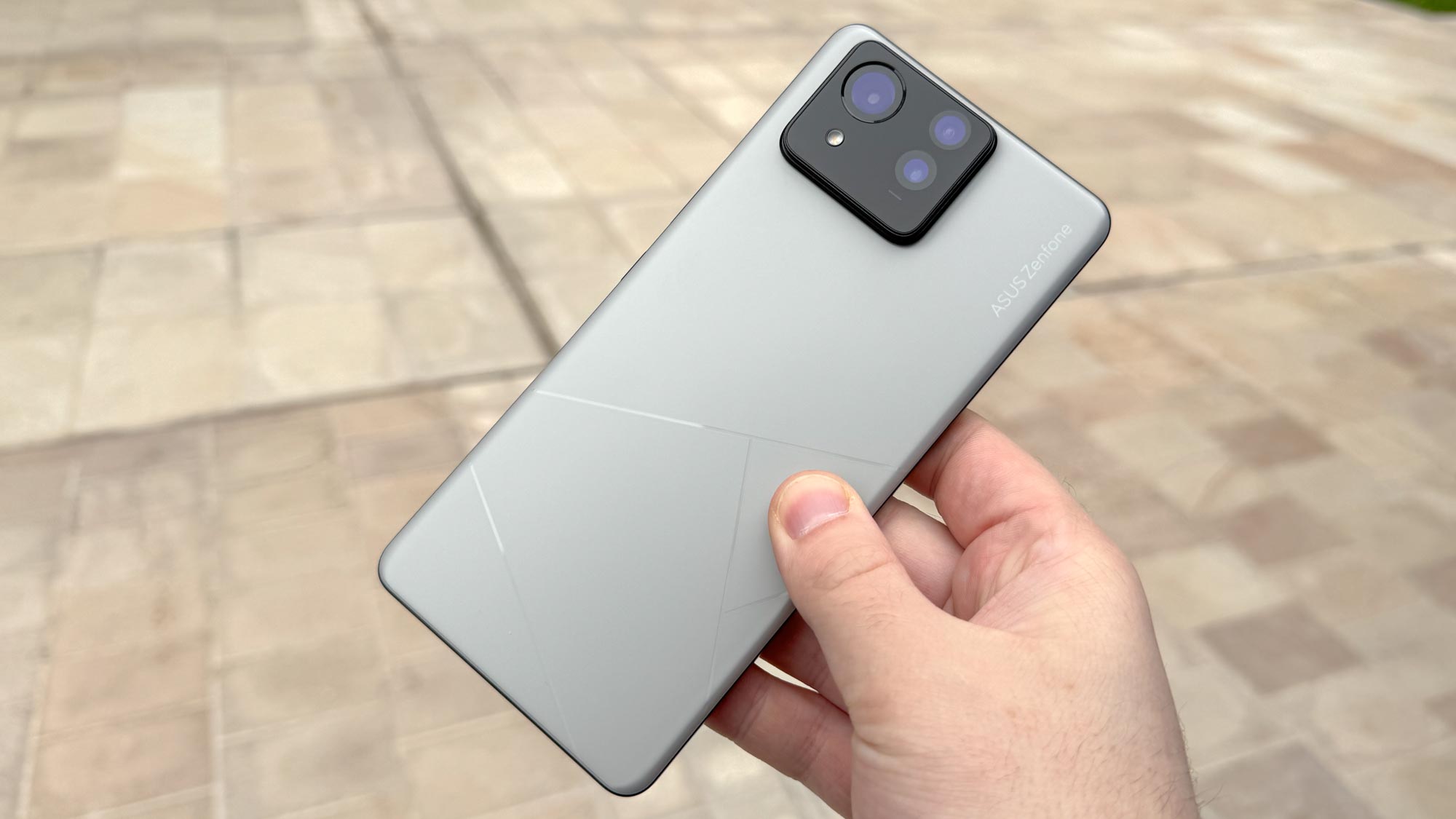
The Zenfone 11 Ultra is basically the twin of the ROG Phone 8 series, as you can see in details like the shape of the camera block or the unusual left corner-aligned USB-C port. The Zenfone isn't meant to be a hardcore gaming phone though, and even if the ROG Phone 8 is the ROG Phone series' most understated design yet, I think the Zenfone has a much greater mainstream appeal.
On a practical level, the Zenfone offers helpful features like a Gorilla Glass Victus 2-clad display, one of the toughest display materials around for smartphone screens. It's also IP68 rated like other leading flagship phones, hopefully letting your phone survive immersion in sand, water or another potential intrusive substance unscathed.
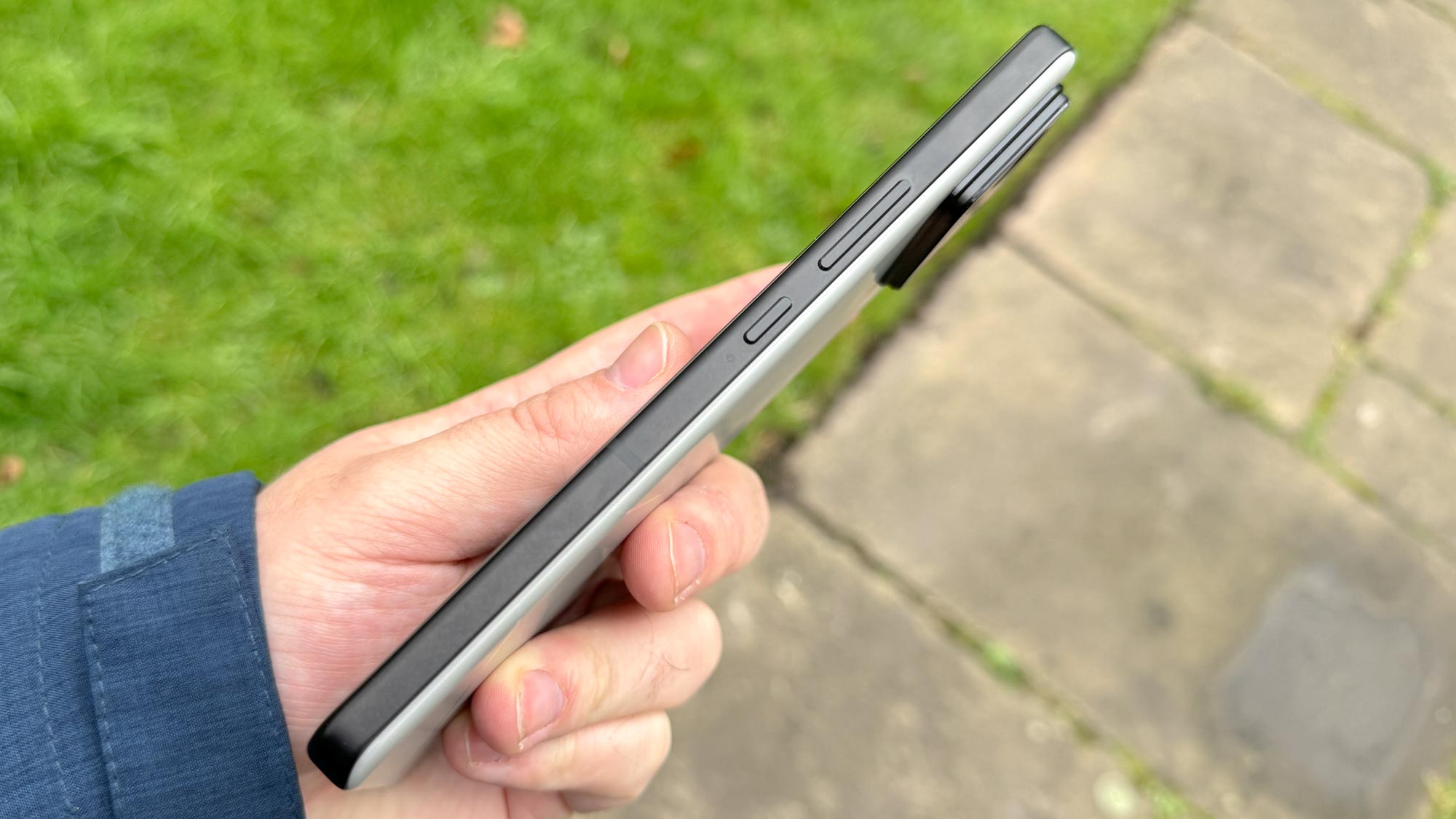
There's also a rare but welcome headphone jack included on the bottom edge for when you need wires, but I found myself listening to my videos and music through the dual stereo speakers surprisingly often. To my ears, these are some of the best smartphone speakers around right now, offering a rich sound with little tinniness like you get from other phones when you crank the volume up.
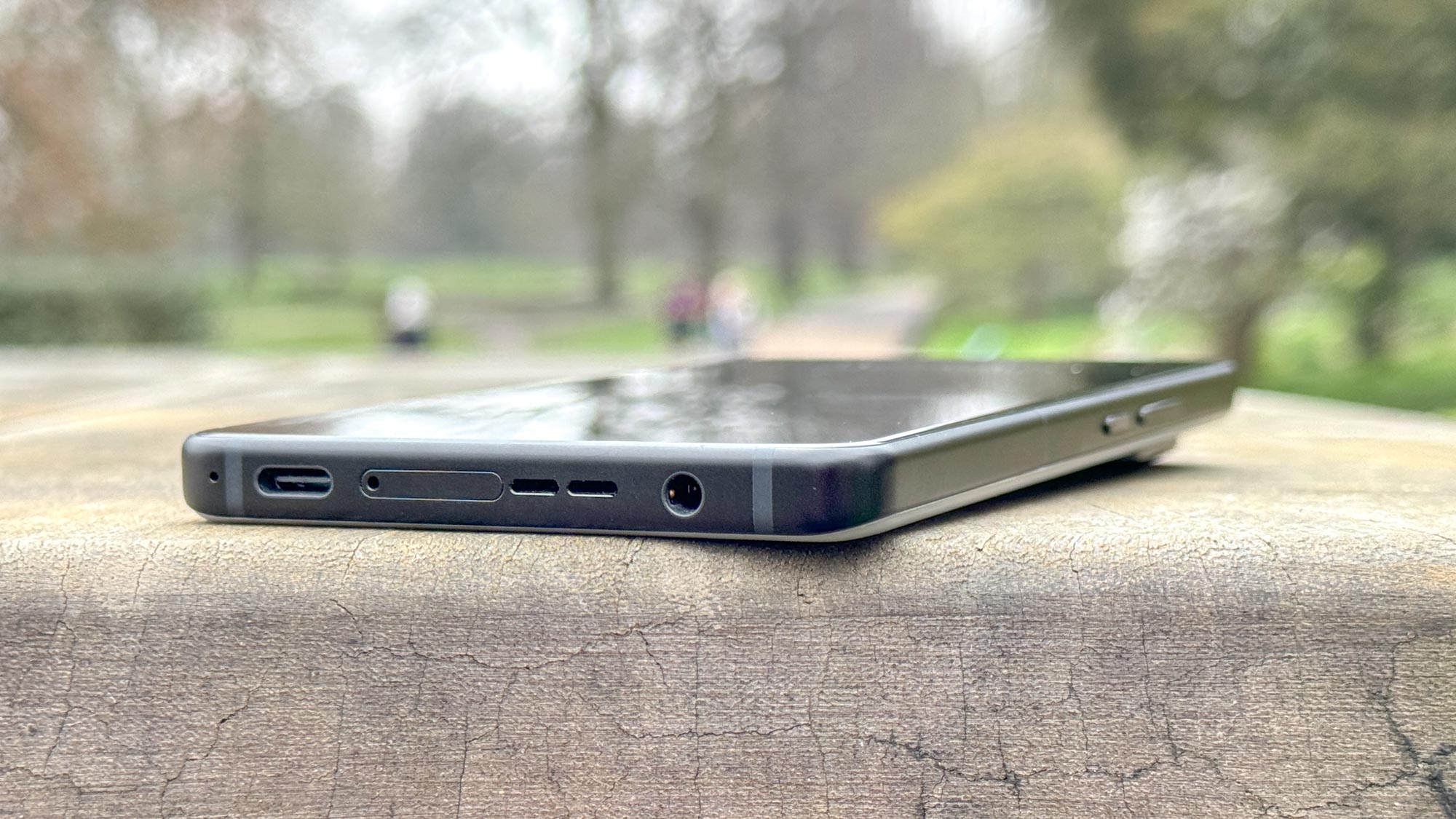
Asus offers four total colorways for the Zenfone 11 Ultra: Misty Gray (pictured), Skyline Blue, Eternal Black and Desert Sand. Annoyingly these options seem to be limited based on which country you're buying in and which version you buy. But that complication aside, the satin-like finish feels great, offers a good level of grip, doesn't show up fingerprints and looks good too, especially with the shiny silver Asus logo and Zenfone logotype present to add a little visual interest.
Zenfone 11 Ultra: Display
Like the ROG Phone 8 before it, the Zenfone 11 Ultra has a 6.7-inch FHD OLED display. By default it offers an adaptive 1 - 120Hz refresh rate, but also a special 144Hz mode that's available in supported apps and games. This beats out many of the phone's rivals which have a hard stop at 120Hz, but only in select circumstances.
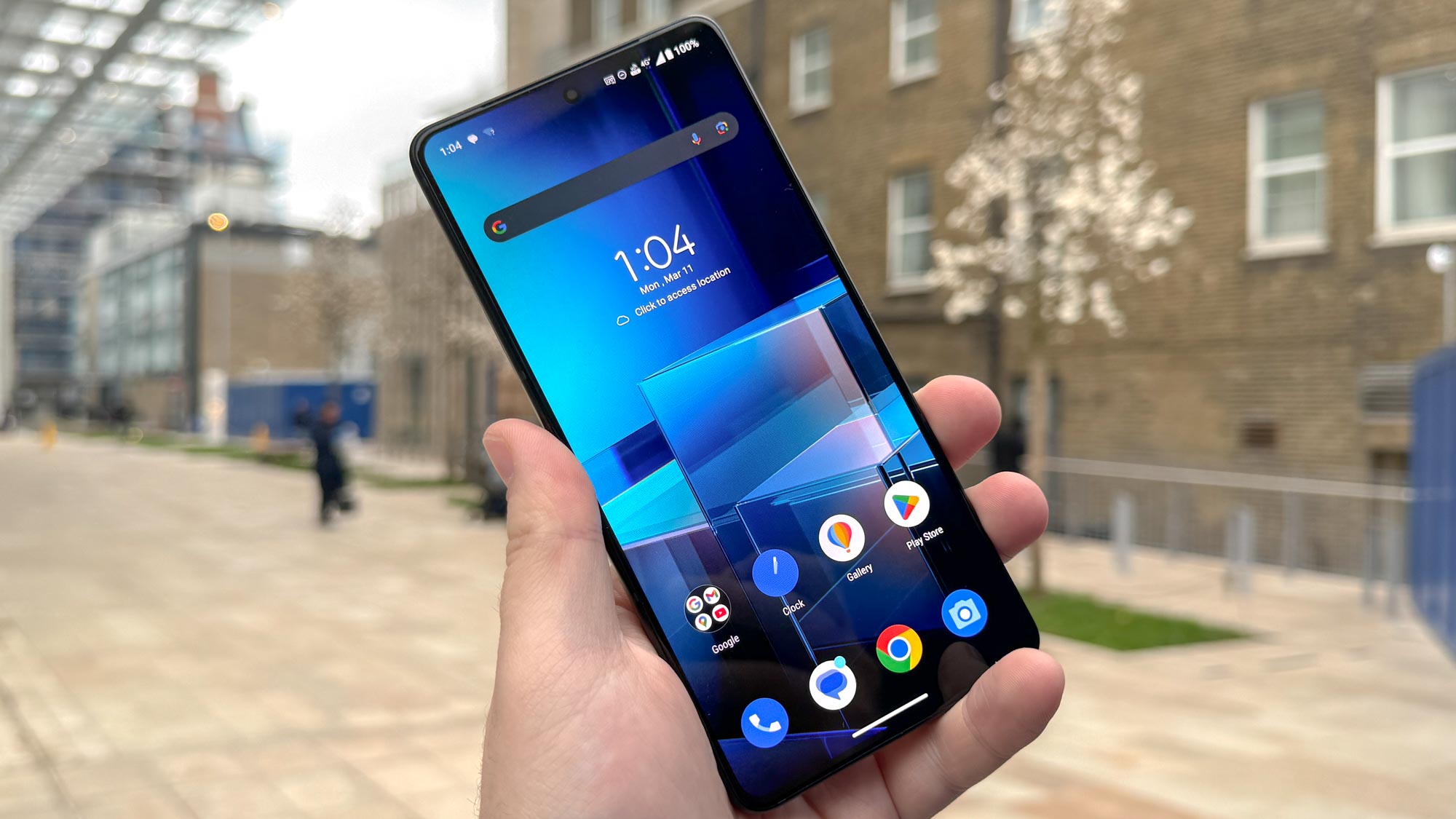
After lab testing the Zenfone's screen, we found it's the brightest and most colorful of all its peers. Its only weakness is color accuracy, where it's beaten by Google and OnePlus' latest phones.
| Row 0 - Cell 0 | Asus Zenfone 11 Ultra | Google Pixel 8 Pro | OnePlus 12 | Samsung Galaxy S24 Plus |
| Peak brightness (nits) | 1,671 | 1,526 | 1,115 | 1,363 |
| DCI-P3 color gamut coverage (%) | 109.8 | 90.4 | 78.9 | 81.5 |
| Color accuracy (∆e, lower is better) | 0.26 | 0.25 | 0.2 | 0.27 |
Zenfone 11 Ultra: Cameras
Asus' camera selection for the Zenfone 11 Ultra compares well with its rivals. There's a 50MP main camera, fitted with the signature Asus feature of a 6-axis gimbal allowing for greater stability, a 13MP ultrawide camera, and then another two 32MP cameras for 3x telephoto and selfie duties. But let’s see how it compares for real with some of the best camera phones around.
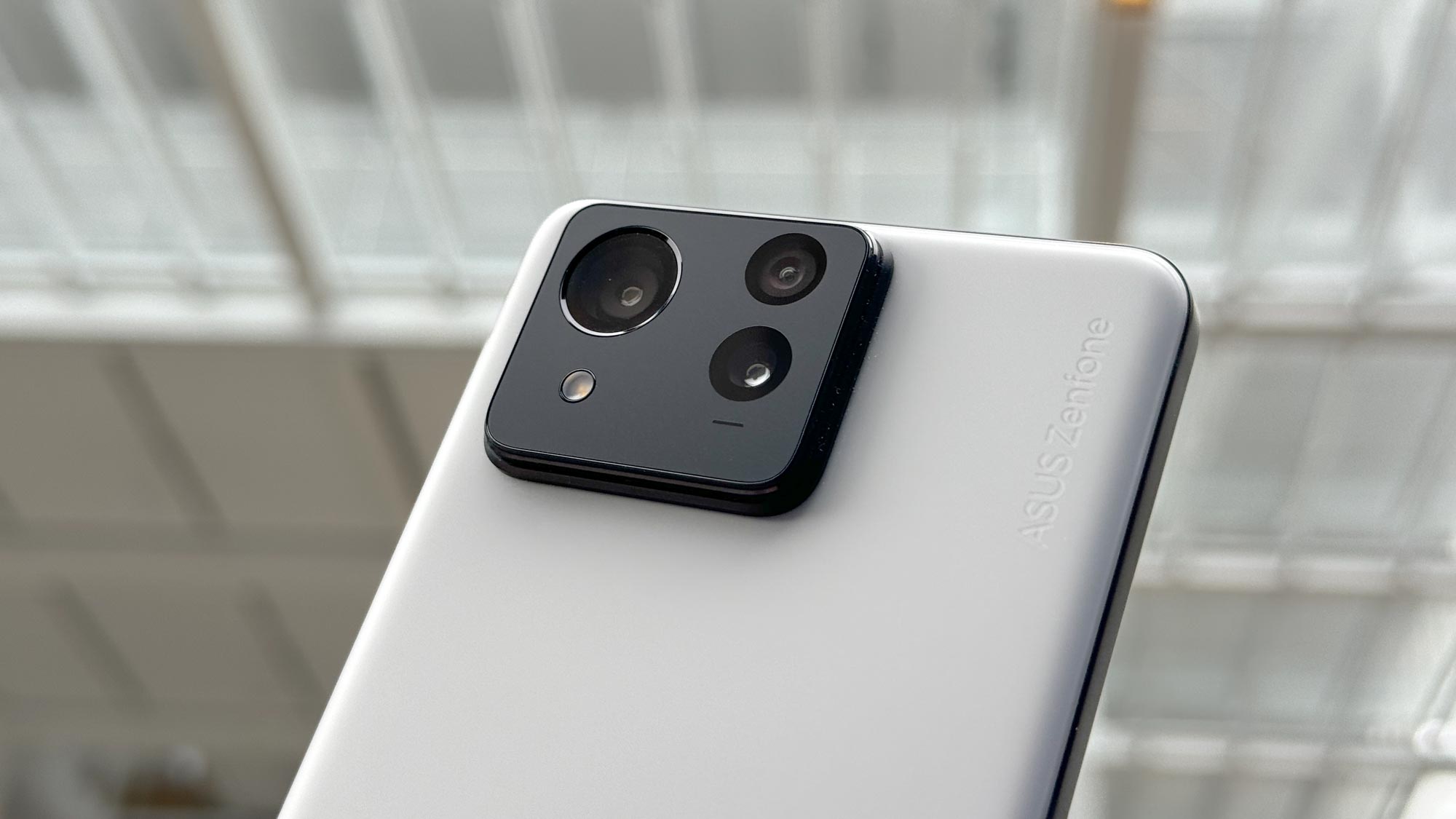
This 50MP main camera against the iPhone 15 Pro Max shows the Asus' tendency to take cooler color temperature shots compared to its rivals. The Zenfone makes gray British scenes look particularly gray, as can be seen here at Paddington Station, and it struggles to capture as much detail as the iPhone, although we have to note that the Asus takes main camera photos at half the resolution of the iPhone by default.
The Zenfone's ultrawide camera fares better against the Pixel 8 Pro, although the narrower frame of view is quite apparent. The color tone difference isn't quite as egregious in this case, but the Pixel's still got a detail advantage.
Confusingly, the 32MP 3x telephoto camera actually shoots photos at 8MP, which flattens out images even more than we've already seen. You can see a stark contrast in how much feather and water ripple detail the Asus misses in this comparison of a moorhen on a pond with the OnePlus 12.
One potential saving grace of the Zenfone 11 Ultra's zoom camera is its HyperClarity feature, which purports to sharpen up images between 10x and the maximum 30x zoom.
The Pixel 8 Pro's Super Res Zoom claims to do much the same thing, and even though the Google phone has 5x zoom instead of 3x, we can see the lettering in this Blue Plaque is sharper in the Zenfone shot at 10x and then 30x. Although the Asus is still lacking in brightness and color.
Sticking with the Pixel 8 Pro for a selfie comparison, the Asus' trend of minimizing detail can be seen once again, perhaps because the Zenfone's 32MP selfie also shoots 8MP images. At least the image is plenty bright enough this time, with the colors arguably being a more honest interpretation of my skin tone than the Pixel's.
That’s been a rough round of testing for the Zenfone overall. But fortunately it gains some ground back with its video recording skills.
For one, there’s the gimbal stabilization function, which physically eliminates a lot of camera shake that electronic stabilization methods used on most other phones can’t compete with. You can see just how much less motion there is going down these steps outside Paddington Station compared to the iPhone 15 Pro Max in their standard stabilizing modes, although the iPhone still does a good job of eliminating smaller movements.
It's the same against the Pixel 8 Pro. Even if both the Pixel and the iPhone arguably have more appealing-looking clips in terms of color, the Zenfone's got them beat on stability.
Then there’s AI Portrait Video, which lets you focus-rack between subjects, like the Cinematic mode found on the iPhone 13 series and later. Unlike the iPhone, the Zenfone doesn't offer the option to adjust the focus point in editing, which could prove a limitation in some cases, but otherwise it’s a neat addition.
Zenfone 11 Ultra: Performance
There are no prizes for figuring out the Snapdragon 8 Gen 3 is the chipset inside the Zenfone 11 Ultra. The 8 Gen 3 is the go-to silicon for the top Android phones this year, with only the Pixel 8 Pro's Tensor G3 chip and certain Exynos-powered Galaxy S24 models breaking that pattern.
You can have up to 16GB RAM and 512GB storage on the Zenfone 11 Ultra, but the standard version, which gets 12GB RAM and 256GB storage instead, is still pretty generous compared to rivals. Other than OnePlus, which offers identical RAM/storage specs in its two versions of the 12, the Galaxy S24, Pixel 8 Pro and iPhone 15 Pro all offer less storage or RAM by default, if not both.
| Row 0 - Cell 0 | Asus Zenfone 11 Ultra | Google Pixel 8 Pro | OnePlus 12 | Samsung Galaxy S24 Plus |
| Geekbench 6 score (single-core / multicore) | 1,259 / 5,866 | 1,163 / 2,745 | 2,188 / 6,525 | 2,272 / 7,083 |
| 3DMark Wild Life Extreme Unlimited (score / fps) | 5,107 / 30.5 | 2,250 / 13.4 | 5,073 / 30.3 | 5,019 / 30.0 |
Looking at the CPU benchmarks, we see the Zenfone's standard performance mode holds the phone back, beating the relatively low-powered Pixel 8 Pro but losing out to its other rivals by a large margin. We will be retesting the phone with its high performance mode enabled in the near future to see if this brings out the full potential of the Snapdragon chip.
At least even in its standard mode, the Zenfone 11 Ultra still does very well on the GPU-based Wild Life Extreme Unlimited benchmark. It actually posts the highest scores of all the phones we compare here, beating even its ROG Phone 8 sibling and the iPhone 15 Pro Max.
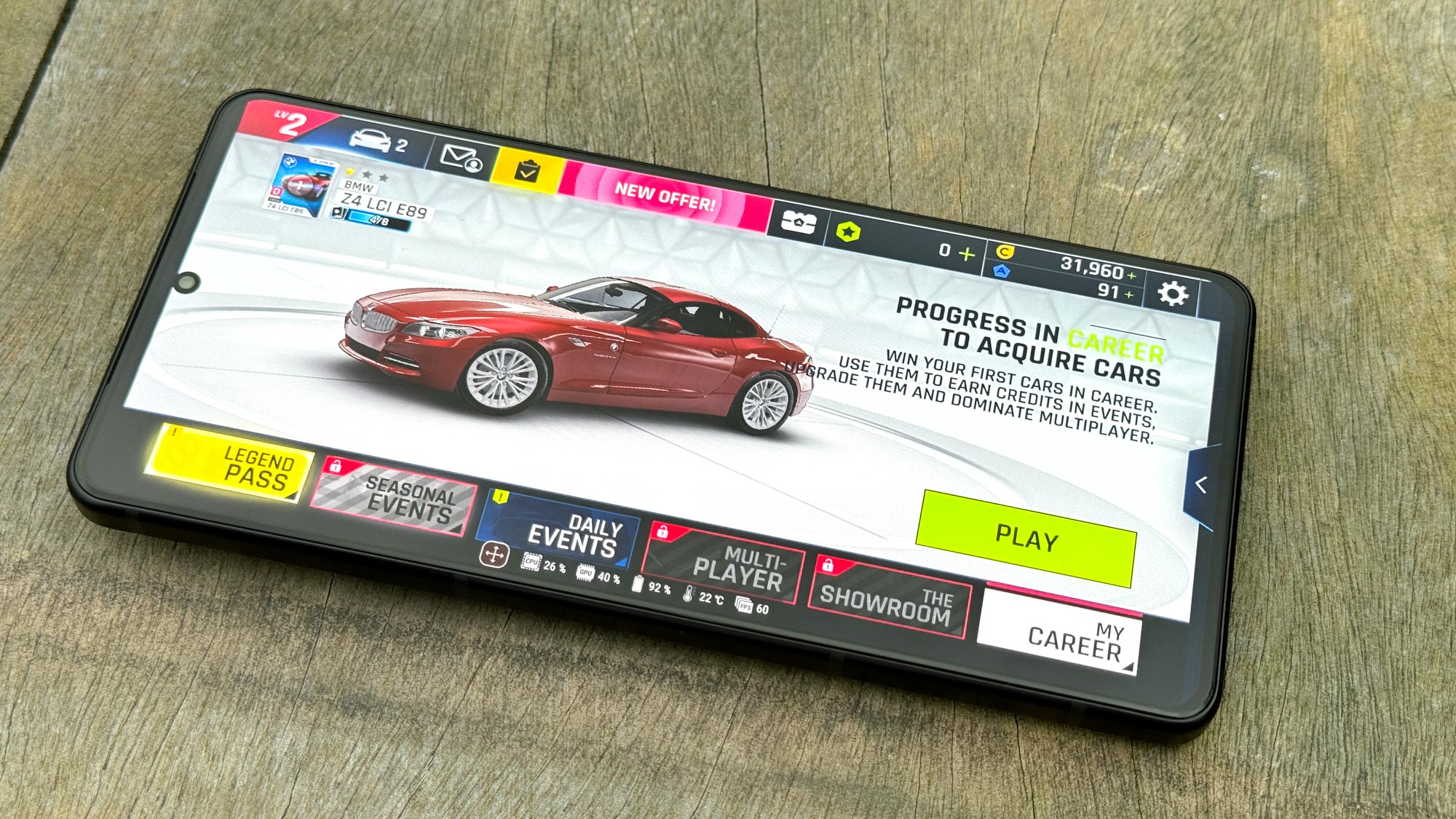
I certainly had a lot of fun playing Asphalt 9 on the Zenfone 11 Ultra. Even if it doesn't have a cooling fan accessory or capacitive triggers like the ROG Phone, you're still getting the core of a fantastic mobile gaming experience.
Zenfone 11 Ultra: Battery and charging
Another thing borrowed by the Zenfone 11 Ultra from the ROG Phone 8 is its 5,500 mAh battery, as well as its 65W wired and 15W wireless charging options. That extra-large battery capacity meant that the Zenfone lasted 17 hours and 52 minutes in its automatic refresh rate mode, and 19 hours and 40 minutes. This is one of the best results we've ever seen, with only the OnePlus 12R and Asus' own ROG Phone 8 doing better.
The Zenfone 11 Ultra's charging capabilities are harder to assess. Asus estimates a full charge in 39 minutes, but without a charger in the box, it can't be guaranteed in the same way as other phones. Since Asus says the 65W standard is compatible with USB Power Delivery, you should be able to get full charging speeds on the Zenfone quite easily with a powerful-enough third-party charger, even if it's not right there in the box for you.
Zenfone 11 Ultra: Software and special features
Asus has implemented several AI features familiar from other phones in the Zenfone 11 Ultra's Android 14-based software. Some of these resemble Samsung's recent efforts with the Galaxy S24's Galaxy AI, such as in-call transitions and automatic transcription when recording speech, as well as some unique applications such as improved noise cancellation.
These are less ambitious than what Samsung and Google offer for their latest phones, but Asus makes a point of the fact these processes all run on-device, a more secure method of using AI to cloud-based processing, and one that means these features can't be switched off or paywalled suddenly, as remains a possibility for Galaxy and Pixel AI features.
One particular novelty is that the Zenfone offers you three different Quick Settings styles - stock Android (like the Google Pixel), Asus Standard, seen on previous Zenfones, and the new Asus Enhanced (shown below), which offers separate, iOS-style notification and settings windows depending on which side you swipe down from the top of the display from. It's more choice than expected, arguably more than is needed, but I won't ever complain about having extra customizability in a phone's interface.
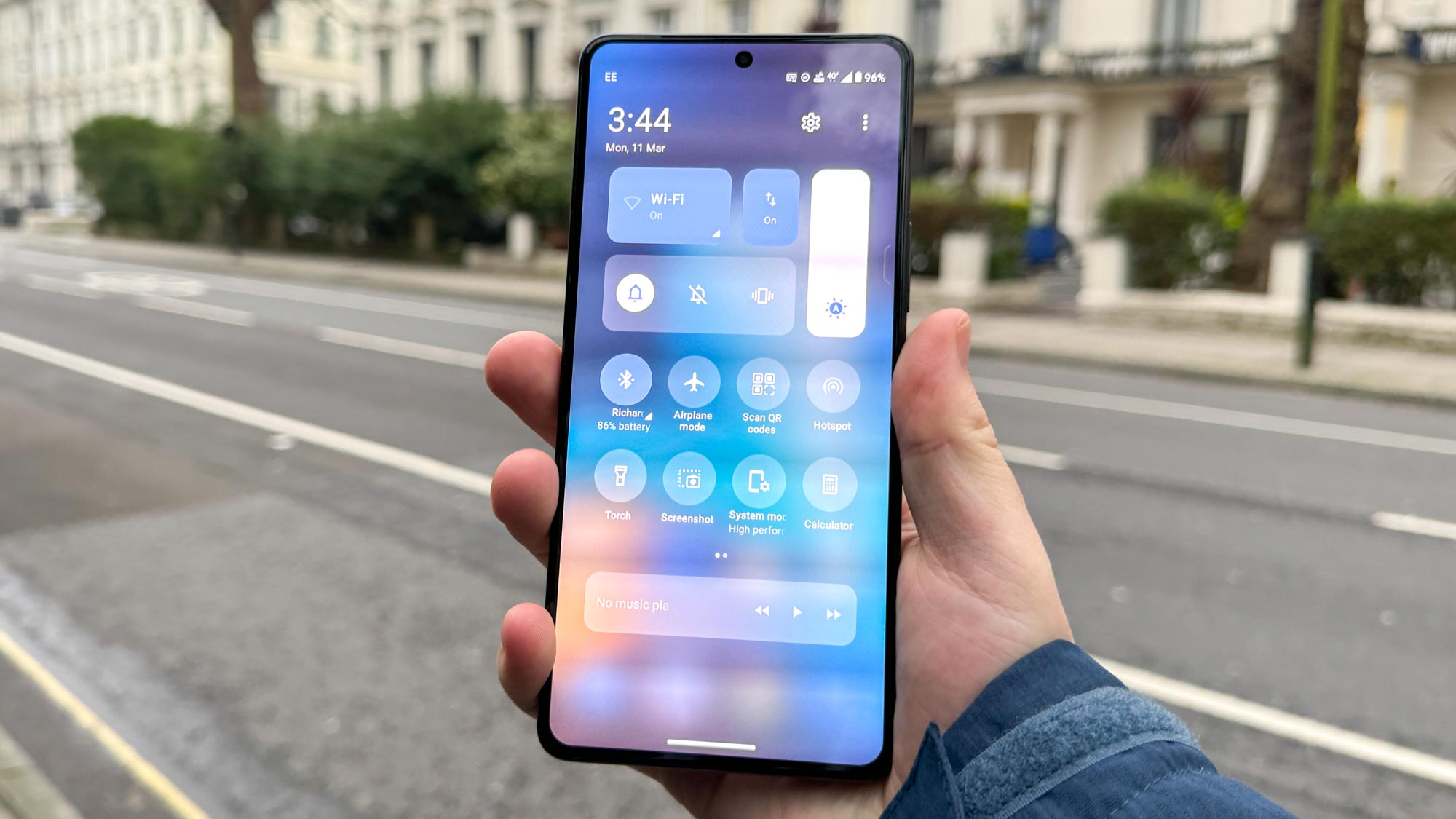
And if you ever want to use the Zenfone 11 Ultra in tandem with another device, you can try out GlideX. This app, available on Windows computers and Macs alike, opens up cross-platform features like unified controls and file sharing, with more on offer like camera sharing and remote access if you’re using an Asus PC. It’s uncommon to see interoperability features like this work so widely, so big thumbs up for Asus being more consumer-friendly than its rivals in this way.
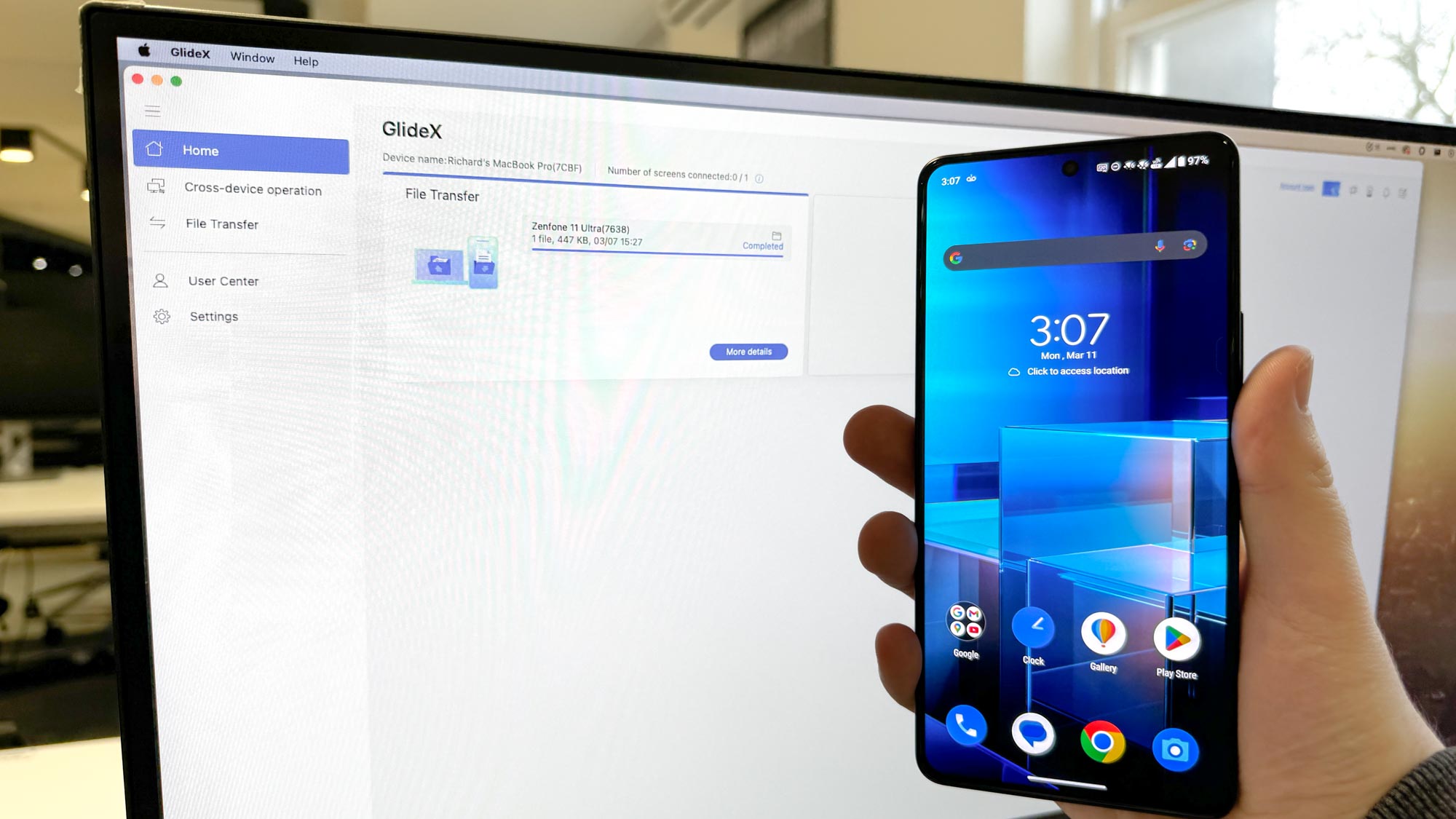
Unfortunately, I now have to break it to you that Asus has committed to just two years of full updates and four years of security updates for the Zenfone 11 Ultra, which is one of the most limited offerings on the market. You'll still be getting full Android updates to the Galaxy S24 or Pixel 8 for another three years after Asus has rolled out its final security upgrade to the Zenfone.
Zenfone 11 Ultra review: Verdict
The Asus Zenfone 11 Ultra is a great expansion (literally and metaphorically) of the Zenfone formula for users who prefer things on the conventional side. Within Asus' stable, it provides a handy mid-point between the standard small Zenfone and the gaming-focused ROG Phone series, but it's also the most direct challenger to the flagship smartphone elite Asus has got.
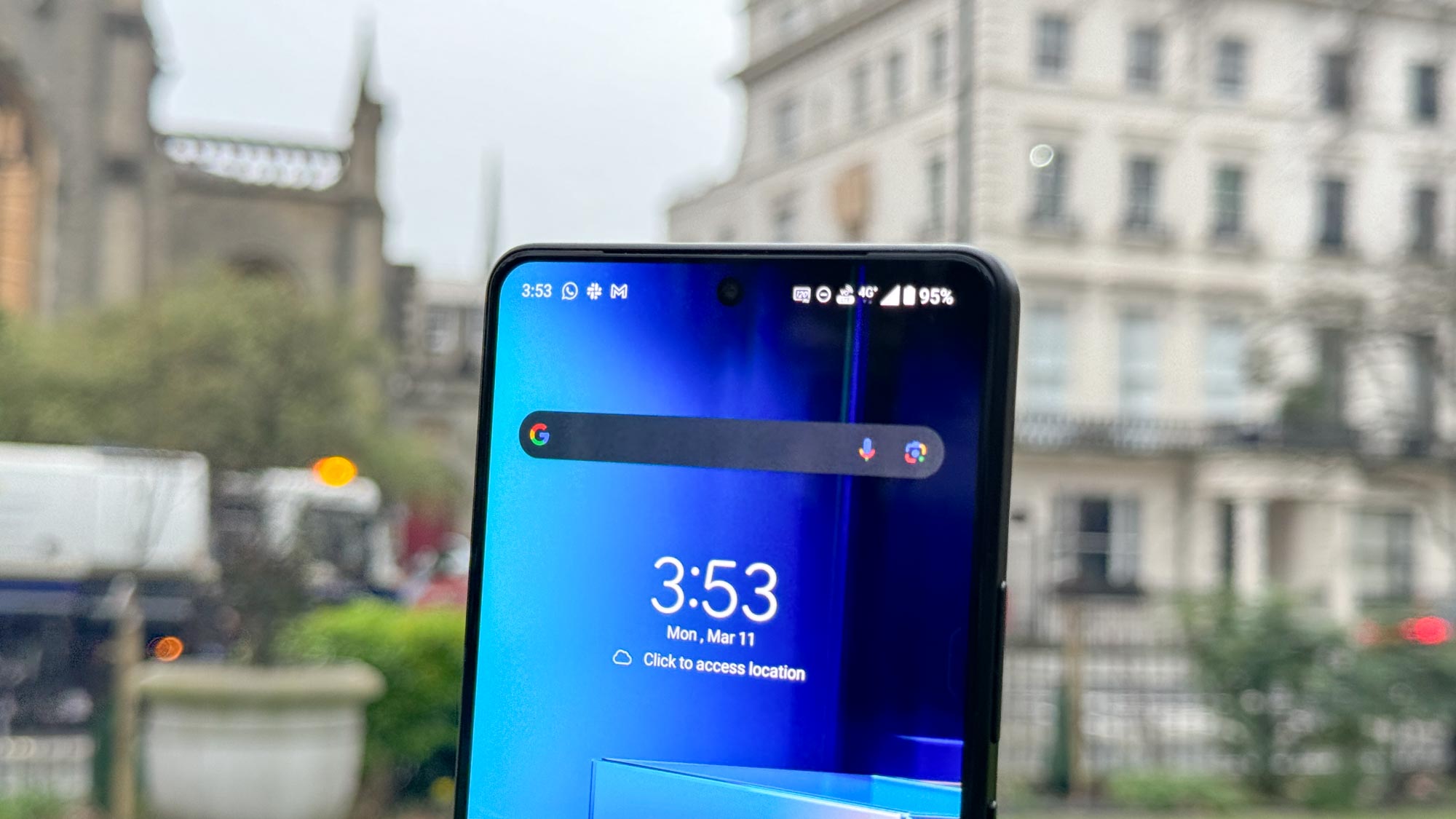
Fortunately the Zenfone stacks up well in several areas against the latest Samsung, OnePlus and Google flagships, both in terms of value and outright feature quality and performance. The battery life is the obvious standout feature, but the gimbal-stabilized video, excellent display and the lower than average price will draw you in. However, the lacking software support and photo quality are two possible stumbling blocks that will direct interested users back towards the rest of the Android flagship pack.
The OnePlus 12 remains better value overall, and the Galaxy S24 series or Pixel 8 series are definitely better for photos, AI features and software updates. But the balance that the Zenfone 11 Ultra strikes could be good for users who want a bit of everything, and don't mind a phone that doesn't excel in these areas.

Richard is based in London, covering news, reviews and how-tos for phones, tablets, gaming, and whatever else people need advice on. Following on from his MA in Magazine Journalism at the University of Sheffield, he's also written for WIRED U.K., The Register and Creative Bloq. When not at work, he's likely thinking about how to brew the perfect cup of specialty coffee.
